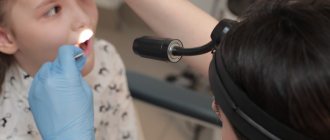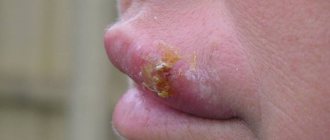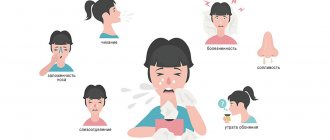Our voice is our main communication tool. Thanks to it, we convey the necessary information to others, we can express our own opinion on a particular issue. For some, the voice has become an integral part of the profession and a means of earning money (for example, for singers or announcers).
But our voice is not always resonant and loud. Like any other human organ or system, our vocal apparatus can malfunction.
The condition when the voice shrinks and becomes hoarse is called dysphonia in medicine. Temporary loss of voice is called aphonia.
A missing or dry voice becomes a real problem for a person, especially if he is a representative of the speech profession.
Make an appointment right now!
Call us by phone or use the feedback form
Sign up
Why do such problems arise? What treatment will quickly and effectively eliminate them? What preventative measures will help avoid the occurrence of aphonia in the future? You will find answers to these and other questions in our new article.
How does a voice arise?
To understand why voice problems arise, you need to understand the mechanism of its formation. The vocal cords located in the larynx play a major role in the production of voice. They consist of muscle and connective tissue. There is a distance between the ligaments - the glottis. When a person is silent, this gap is wide open; when we speak or shout, it narrows. Sound is produced when air from the lungs passes through the glottis, causing vibrations and oscillations of the vocal cords. In this case, the ligaments must be stretched and closed when air passes through them.
It is logical that if a person’s voice shrinks or disappears, then for some reason the vocal cords are not adjacent to each other. At this moment, a person can only whisper: whispering occurs when the air flow rubs against the walls of the larynx.
Most often, problems with the vocal cords are associated with infectious diseases of the upper respiratory tract, but you will be surprised that throat diseases are just the tip of the iceberg.
There are many more real causes of inflammation of the vocal cords, and they are not always associated with the ENT organs.
Production of sounds
The process of sound and voice formation has been well studied over the past decades. The acoustic component of speech arises as a result of the work of the muscles of the peripheral apparatus. It works like this. When starting a conversation, a person unconsciously exhales slowly. The air flow from the lungs enters the larynx, the ligaments of which are in a certain position corresponding to the required sound. In addition, the tongue, lips and lower jaw also take the necessary position. The vibration of the vocal cords in the larynx during the passage of air flow creates a sound that is corrected by the organs of the oral cavity.
Speech is a complex process in which several dozen anatomical structures are involved. Organic or functional disorders in any of them will lead to a change in voice or the appearance of speech defects of varying severity.
Causes of inflammation of the vocal cords
- Infectious diseases of the ENT organs. This is the most common cause of inflammation of the vocal cords. Pharyngitis, tonsillitis, flu, bronchitis, whooping cough, measles, etc. often complicated by damaged vocal cords. That is, in these cases, voice problems are more likely a consequence (symptom), rather than the main disease.
- Laryngitis. The disease is an inflammation of the larynx, affecting the vocal cords. With laryngitis, they noticeably thicken, become flabby, and cannot fully close. Acute laryngitis is most often caused by a viral infection, and less often by bacteria and fungi. In addition to dysphonia, the patient complains of symptoms such as attacks of dry cough, itching in the throat, and a feeling of a lump in the throat. If the inflammatory process in the larynx has become chronic, we talk about chronic laryngitis. This form of the disease can lead to pathological changes in the vocal cords. Chronic laryngitis can occur in three forms - catarrhal, hyperplastic and atrophic. With the catarrhal form, as a rule, symptoms such as dysphonia (hoarseness, hoarseness, change in voice timbre), dry cough during the day, and sputum production in the morning are observed. The hyperplastic form is most often diagnosed in representatives of speech professions, who, due to the nature of their activities, often overstrain their vocal cords. At the same time, they thicken, and small growths form on them - the so-called “singing nodules”. In the atrophic form, thinning of the mucous membranes occurs, which is manifested by persistent cough, discomfort in the throat and loss of voice.
- Hypothermia. Voice problems can occur when the throat is directly exposed to cold temperatures, such as breathing in freezing cold air or drinking ice-cold drinks.
- Overstrain of the vocal cords. Increased stress on the vocal apparatus is experienced by those people who have to speak or sing for a long time and a lot due to the nature of their work. These are singers, announcers, teachers, lecturers, guides, call center operators, etc. In this case, the voice is their working instrument, so quick and high-quality treatment of the vocal cords is a priority issue for them.
- Strong and loud scream. If you scream loudly and heart-rendingly, speak in a raised voice for some time, or sing along with a performer during a concert, you can “break” your voice. And you don’t need to be a professional singer to overstrain your ligaments. By the way, not only representatives of speech professions overexert their voices. If a person works in a factory where equipment is noisy all day long, he has to “shout over” the noise in order to talk to his co-worker. Spend a full working day like this, and hoarseness will certainly appear in the morning.
- Exposure to the mucous membranes of the larynx of chemicals, vapors and compounds. Workers in hazardous industries are susceptible to this impact. Therefore, it is imperative to wear personal protective equipment while working.
- Thermal burns. Sometimes hastily eaten hot food can lead to a burn of the larynx and, accordingly, the appearance of a hoarse voice.
- Chronic diseases of the ENT organs. The presence of a constant source of infection in the body can provoke the spread of infection to the mucous membrane of the larynx, thereby causing its inflammation.
- Allergic reactions. Upon contact with an allergen, the body responds, which is called an allergic reaction. It may manifest itself as swelling of the larynx and the appearance of hoarseness or hoarseness. In especially severe cases, Quincke's edema may occur - severe swelling of the larynx, when the lower respiratory tract is completely blocked, and in the absence of emergency help and treatment, a simple allergy can be fatal. The most common allergens are house dust, pet hair, pollen, medications, seafood, citrus fruits, chocolate and other foods. This item also includes prolonged stay in dusty rooms with polluted air. If you work in such unfavorable conditions, you need to take care of personal protective equipment, such as a respirator mask.
- Neoplasms of the larynx. These can be papillomas, cysts, granulomas, song nodules, cancer, etc. You can suspect the presence of neoplasms if suddenly, for no apparent reason or the presence of other symptoms, your voice begins to disappear or deepen.
- Neurological disorders. Problems with the nervous system can negatively affect any organ, including the larynx. Therefore, some neurological disorders, stress or nervous strain sometimes lead to temporary loss of voice.
- Smoking. Nicotine and other harmful substances contained in cigarettes negatively affect the mucous membrane of the larynx. With frequent and prolonged smoking, the voice acquires a characteristic hoarseness and becomes rough. Very often, such changes in voice become irreversible. The only remedy for treating voice in this case is to stop as early as possible and quit the bad habit.
The presence of so many causes of voice problems makes it very difficult to make an independent diagnosis. For example, it is impossible to determine whether you have tumors in the larynx. Therefore, if hoarseness, hoarseness or loss of voice occurs, it is imperative to consult with an otolaryngologist. Further tactics for treating the disease will be clear after a direct examination and the correct diagnosis.
Friends! Timely and correct treatment will ensure you a speedy recovery!
Anatomy of speech
The vocal apparatus is a set of anatomical structures that provide the formation of voice and speech. In its structure, it is customary to distinguish two large sections: peripheral and central. The central section is represented by the brain, in particular, the cerebral cortex, a number of subcortical nodes and pathways connecting them together. In addition, it includes the nuclei of the cranial nerves, which are involved in sound production. The anatomy of the peripheral vocal apparatus includes bone, cartilage and muscle formations, ligamentous apparatus and peripheral nerves that perceive or transmit any information to the organs of articulation.
The peripheral department is divided into three functional departments that perform different tasks: respiratory, vocal and articulatory. If any of them malfunctions, speech disorders occur.
Respiratory section
The main sound-producing factor is air passing through the respiratory tract. In this regard, vocalists always practice proper breathing to improve the acoustics of their voice. Breathing movements are carried out reflexively; as a rule, in ordinary life a person does not think about when to inhale or exhale. The regulatory mechanism is associated with the respiratory center in the medulla oblongata.
The respiratory section includes both lungs, the tracheobronchial tree, the diaphragm and the intercostal muscles. The movements of the latter lead to expansion of the chest during inhalation and its narrowing during exhalation. The diaphragm is involved in the abdominal type of breathing, which is carried out mainly due to its stretching.
The formation of sounds and words occurs during exhalation. The air passing through the vocal and articulatory departments causes their structures to vibrate. If a person has lung diseases, the sound of speech is distorted.
Voice department
In phoniatry, there are three characteristics of any person’s voice: timbre, pitch and strength. All of them are created when the vocal cords vibrate as air passes through them. The amplitude of the vibration determines the strength of the voice. The stronger the vibration, the higher the sound. Timbre is determined by voice coloring, specific to each individual person. The tension of the folds and the degree of air pressure on them create a certain pitch of the voice.
One of the most common complaints from patients is changes in voice characteristics. Most often, this condition is associated with functional disorders that occur against the background of infectious and non-infectious diseases.
Sound department
The structure of the articulatory part of the vocal apparatus includes anatomical formations that are located in the oral cavity: the lower jaw, tongue, soft palate and lips. Movements of these structures are carried out with the help of muscles. If their work is disrupted, a person may develop various speech defects. Speech therapy exercises and massage allow you to train muscles, improving speech.
The tongue is the main articulatory organ. Its basis is striated muscles, which provide movement and change in shape. During a conversation, it can become longer, shorter, and also change its width. The structure of the tongue is divided into three parts: the root, fixed to the floor of the oral cavity, the back and the tip.
The lower and upper lips are movable structures. They participate in the pronunciation of almost all sounds, as they determine the speed of air flow from the oral cavity. Thanks to facial muscles, they can change their shape, which also plays an important role in the physiology of speech in humans. The mandible is located at the bottom of the skull and has a limited range of motion. Participates in the pronunciation of stressed vowels: “O”, “U”, “I” and a number of others.
The soft palate forms the upper border of the oral cavity and is tightly connected to the hard palate. Thanks to developed muscle fibers, it can rise and fall down. Anatomically separates the oral cavity from the nasal pharynx. It has a small tongue at the end. When pronouncing the consonants “N” and “M”, the velum is lowered. All other sounds are pronounced with the soft palate lowered. When movement is impaired, the voice becomes nasal, which is associated with the direction of air flow into the nasal cavity.
If a speech defect appears, you should not try to eliminate it yourself. Such treatment should be carried out by a speech therapist or doctor.
The articulatory apparatus also includes a number of passive structures: dentition, nasal cavity, hard palate and pharynx. They participate in sound pronunciation, acting as support points for the tongue and soft palate.
Symptoms
Most often, pain in the vocal cords is detected in the morning. But it is extremely rare that hoarseness or loss of voice is asymptomatic. In addition to voice problems, depending on the final diagnosis or condition that caused the damage to the ligaments, a person may experience the following symptoms:
- sore and dry throat;
- a sore throat;
- cough;
- hoarseness;
- itching in the larynx;
- itching in the eyes;
- nasal discharge;
- elevated body temperature.
The appearance of at least one of these signs in combination with loss of voice or hoarseness is already enough to make an appointment with an ENT doctor to prescribe effective treatment. When treating a disease, the doctor relies primarily on the results of examining the patient and determining the cause of the pathology.
Once the cause of problems with the vocal apparatus has been established, treatment of the throat can begin.
How to treat vocal cords?
Traditionally, inflammation of the pharynx and larynx is treated by an ENT doctor. If dysphonia is associated with an infectious disease, the treatment regimen may include taking antibiotics, antiviral or antifungal drugs, anti-inflammatory and antiseptic agents, lozenges and lozenges for coughs and sore throats, gargling, inhalations and a course of physiotherapeutic treatment. An ENT doctor will also help if voice loss is associated with burns to the larynx or exposure to harmful substances.
A phoniatrist treats strained ligaments. After the examination, the patient will be prescribed a treatment regimen, which, in addition to traditional treatment methods, includes special exercises so that the problem does not recur in the future.
If dysphonia is a consequence of an allergic reaction of the body to an irritant, treatment should be carried out under the supervision of an allergist. Neurological disorders and the consequences of stress are treated by a neurologist and a psychotherapist. If laryngeal tumors were discovered during the examination, further treatment must be continued with an oncologist.
Thus, treatment tactics will depend solely on the cause of dysphonia or aphonia!
Prevention
In many ways, the appearance of dysphonia is a signal that somewhere they haven’t looked after something and haven’t taken care of their health. To avoid having to subsequently be treated by an ENT doctor:
- treat infectious diseases in a timely manner;
- do not get too cold, do not breathe through your mouth in the cold and do not drink ice-cold drinks;
- do not shout, do not speak in a raised voice;
- take breaks if you have to talk a lot and for a long time;
- do special exercises recommended by phoniatrists to avoid strain on the vocal apparatus;
- avoid contact with allergens;
- wear masks if you work in unfavorable conditions;
- stop smoking.
If a problem does arise, do not engage in self-diagnosis or self-medication: a timely visit to an ENT doctor will help avoid complications and speed up the recovery process.
At the ENT Clinic of Doctor Zaitsev, consultations are conducted by highly qualified ENT doctors and phoniatrists with extensive practical experience. When the first signs of voice problems appear, please call the following numbers: +7 (926) 384-40-04 and come!
We will be happy to help you!
Ulezko Galina Mitrofanovna
Voice hygiene
phoniatrist G. M. Ulezko (Guidelines for persons of voice professions: vocalists, actors, teachers, lecturers, tour guides, kindergarten teachers, students, managers, etc.) The
guidelines set out the following issues: the concept of “voice” and its components; anatomy and physiology of the larynx; factors causing diseases and measures to prevent the most common diseases; voice hygiene during mutation, pregnancy, hazardous work, hormonal imbalances, diseases of the ENT organs, diseases of other organs and systems; smoking and alcohol as negative factors for voice function; vocal hygiene measures. For a wide range of readers.
Introduction.
Voice is the sound through which communication between living beings is possible. According to Academician Pavlov, this is the second signaling system that only humans possess. The voice is a means of communication; it can convey various subtle emotional experiences: joy, pain, fear, anger, delight, danger. Complex neural connections control vocal function, and disruption of this coordination leads to voice impairment. Thanks to the multiple shades of voice coloring, it can influence the nervous system of another person. This fact is used in the practice of psychotherapists as sound therapy.
Characteristics:
- I formant (2) - responsible for low frequencies in colloquial speech;
- Formant II (3) - responsible for high frequencies in colloquial speech;
- low singing formant (4) - responsible for low frequencies in the singing voice;
- high singing formant (HSF) (5) - III formant - is present only in the singing voice, gives the voice a special sonority, flight, “metal”, increases the strength of the voice, improves intonation, helps improve the quality of vibrato. The higher its vibration amplitude column on the spectrogram, the stronger and more beautiful such a voice is.
A voice devoid of high frequencies seems to the listener dull “as if from a barrel”, “creeping”, quieter, quickly fading, without ringing.
A voice lacking low frequencies has an irritating effect on the nervous system. The excessive predominance of high frequencies in it makes it shrill and unpleasant for the listener.
Individual harmonics (overtones) (6) - give a unique coloring of the voice, inherent only to a given individual. The richer the voice, the more overtones it has. From the data of the sound fund of the State Television and Radio Broadcasting Company (V.G. Ermolaev “Manual of Phoniatry”), the voice of E. Caruso, laid out on a spectrogram, had the highest frequency of vibration of the third formant and the richest set of individual harmonics.
So, a beautiful, healthy voice must have the full sum of characteristics in order to sound full and delight the ears of others. And the combination of different sound frequencies is expressed by the variety of sound colors.
Anatomy and physiology of the larynx.
The apparatus (instrument) with which a person produces sound (voice) is the larynx.
Structural elements of the larynx:
- True vocal folds (TGFs) - their thickness contains the vocal muscle. Vibrating under air pressure while inhaling, they produce sound. Their movements are controlled by the central nervous system (CNS). Using a microlaryngostroboscope (a device that allows you to see the movement of folds), their movements are determined in the form of flapping “butterfly wings”, oscillating in the horizontal and vertical planes. Normally, their surface is white, shiny, and the closure is complete.
- Vestibular (“false”) ligaments. They exist to compensate for the function of the IGS in case of injury (impossibility of movement due to paralysis, removal of one of the IGS in case of laryngeal cancer). When they close, the sound is lower, muffled and rougher than usual, and fatigue occurs quickly. With proper coordination of muscles and a healthy larynx, the false folds are motionless; with functional diseases of the larynx (nervous incoordination), a tendency to close may appear.
- Arytenoid cartilages. IGS are attached to their vocal processes. The processes work as “hinges”, perform various movements, through which the IGS move in different planes
- aryepiglottic fold
- The epiglottis is a protective device of the body that closes the entrance to the larynx during swallowing.
- Pear-shaped sinuses (pits) are depressions in the form of pockets.
- Anterior commissure (commissure) - corresponds to the anterior part of the true vocal folds.
- Interarytenoid space
- The ventricles of the larynx are a depression in the form of a gap between the true and false folds.
The voice apparatus is necessary for communication for any person, but for a professional, voice is an indicator of professional suitability. These individuals need a healthy apparatus, but they have a heavy vocal load.
Voice professionals.
Voice professionals include:
- singers;
- readers;
- actors;
- tour guides;
- agitators;
- kindergarten teachers;
- teachers and lecturers;
- lawyers;
- mass entertainers;
- radio and television announcers;
- persons holding leadership positions;
- dispatchers;
- telephone operators;
- students of theater and vocal educational institutions.
These persons, due to various factors, may suffer from certain diseases of the vocal apparatus, which do not allow them to engage in professional activities.
Let us analyze the harmful factors, having studied which, the measures of vocal hygiene and disease prevention are clear.
Kindergarten teachers.
They constantly have to sing and read against the background of noise created by children's voices, the spectral energy of which reaches 1000 Hz. To block out the noise, educators should raise their voices to 70-72 dB. During walks, the device is also significantly overstrained against the background of city noise.
Tour guides.
Large quantitative voice load. In some cases, noise, insufficient ventilation, increased dust content and the cooling factor are added. Employees of the city excursion bureau experience sudden changes in air temperature, noise from city transport, shocks, and the effects of gasoline vapors and gases on the respiratory tract. A malfunction or absence of a microphone on a bus increases the load on the vocal apparatus.
Teachers and speakers.
They have to daily overload the vocal apparatus with quantitative load and qualitative changes: they have to speak loudly, at very high notes, unusual for their voice. Along with this, the following are of great importance: temperature, air pollution (dust, chalk), the degree of relative humidity, maintaining the proper degree of silence in the classrooms, the acoustic properties of the room where classes and lectures take place.
Artists and students of theater universities.
Large speech load during rehearsals, performances, and stage classes. speech, the use of a wide range from quiet to very loud, imitation of animal voices, voices unusual for a given age (childhood, old age), transmission of emotional states (screaming, crying). This leads to the device operating under extreme conditions unusual for the normal speech mode of a person. Combination of voice work with various movements on stage; uncomfortable bulky costumes and props; stage dust; varnishes, paints and decorations have an adverse effect on the voice.
Vocalists - especially students of initial courses of vocal departments.
They are adversely affected by:
- Large daily vocal loads, previously unusual (contribute to overload);
- Using a solid attack, forced sound;
- Singing in a tessitura unusual for a given voice (both very high and very low);
- Singing without vibrato. Vibrato helps relieve muscle tension while holding a sound. A flat sound without vibrato accumulates static tension.
- Undeveloped vocal technique: singing without proper diaphragmatic-lower costal breathing, especially among vocalists who practice classical singing.
Incorrect change of chest and head registers, use of falsetto mode: a low-energy level in which only the edges of the vocal muscle work instead of the entire thickness of the muscle mass. When singing in this mode, rapid fatigue and non-closure in the form of an oval gap are observed, which is referred to in the literature as “vocal paresis”. Such a vocalist, if his technique is not perfected, will definitely have problems with his voice.Singing without proper breathing techniques leads to hypertonicity of the auxiliary muscles of the neck and upper chest and impaired closure of the ligaments.
- Rest is of great importance for the vocal muscle.
Full restoration of vocal function for a professional vocalist occurs after 6-12 hours of vocal rest (individually depending on the time of vocal load), a student of the vocal department needs more time for rest (individually depending on the onset of fatigue). Studies conducted to determine the time when signs of voice fatigue completely disappear suggest that after a performance, a rest of at least 24 hours is required for the soloist to fully restore his voice. A break between performances in large performances for leading soloists requires 3-4 days. - To prevent voice disorders, singing is prohibited during the menstrual cycle, when the IGS are swollen, they have a pronounced vascular network, and local blood circulation is increased.
Moreover, the first 2 days before menstruation are also dangerous for vocal breakdowns. When singing during such a period, there is a physiological rush of blood to the IGS, impaired mobility of the free edge due to some swelling. Therefore, there is a danger of non-closure, the occurrence of IGS nodules or even hemorrhage into the vocal muscle. In this regard, in opera houses and State Philharmonic Halls, the first three days of the menstrual cycle for singers are officially declared non-working days. But ideally, you should not sing for the entire period of your period. Due to the commercialization of creative activities and the signing of long-term contracts, rest becomes an impossible obstacle. Then the vocalist must carefully use breathing techniques, avoiding forced notes and selecting a repertoire that is easy for these days. As a last resort, follow the instructions of the phoniatrist on these days (sing “under the guise” of medications). But this is still a violation of vocal hygiene, which can lead to the formation of pathology.
To understand the pathology by people who do not have professional medical education, we can schematically divide diseases of the larynx into:
- Functional diseases of the larynx
- Organic diseases of the larynx: acute laryngitis
- chronic laryngitis
- benign laryngeal formations
- malignant tumors of the larynx
The most common diseases among voice professionals and the causes that cause them.
Functional voice disorders -
Associated with impaired coordination between the vocal folds and the central nervous system, with the inclusion of unnecessary auxiliary muscles of the neck and chest in phonation, and disconnection of the diaphragm from coordination (its spasticity).
The disorders are based on very complex neural mechanisms.
As a result, pathological movements of the IGS are observed:
- insufficient closure (hypotony);
- excessive convulsive closure (spasmodic dysphonia);
- sometimes there may be many complaints about voice fatigue during singing, but upon examination the picture of the larynx is normal (phonasthenia - exhaustion);
- there may be a complete loss of voice sonority, only whispered speech, the ligaments look normal, but close asynchronously, the picture changes all the time (functional aphonia);
These diseases are promoted by vocal and neuropsychic overload, stress, and non-compliance with the voice regime. For voice professionals: general fatigue, voice strain, forced singing, singing during menstruation, with acute diseases of the upper respiratory tract, weakening of the body as a result of a previous general illness. As a rule, it develops in individuals with an unstable nervous system. Failures among vocalists to sing certain notes (passages) cause fear of a new performance, thus increasing the nervous load.
Chronic laryngitis (inflammation of the larynx) -
In people of voice professions, it may be associated with repeated (frequent) respiratory diseases and work load during this period, as well as with a violation of the voice regime. Frequent overexertion causes persistent laryngitis. Untreated infection of neighboring ENT organs also maintains inflammation of the larynx.
Nodules of singers (screamers) -
Formations on the edges of the IGS occur due to vocal trauma (screaming, coughing), forced singing, singing during acute inflammatory diseases of the respiratory tract, during menstruation. Some patients note that with this pathology they cannot sing piano when they can sing forte well.
Hemorrhage into the vocal fold -
It can be either professional voices or any person. Typically this may result from:
- severe dry hysterical paroxysmal cough with a closed mouth, when subglottic pressure increases (often with tracheitis);
- as a result of a sharp forced squeal, scream;
- lifting weights;
- singing during menstruation;
- when singing during laryngitis, when the vascular network is especially pronounced.
Eliminating unfavorable factors in this case is vocal hygiene.
Other diseases of the larynx that occur in people of any profession.
Acute laryngitis -
Occurs with sudden hypothermia, acute viral infection, drinking cold drinks, after overheating, untimely treatment of upper respiratory tract diseases, staying in a room with a high concentration of chemical irritants. For the period of treatment, complete vocal rest and sick leave until complete recovery are recommended.
Malignant and benign formations of the larynx -
An important role is played by smoking cessation, compliance with the voice regime in patients with chronic laryngitis and timely treatment of chronic laryngitis.
Paresis or paralysis of the larynx (unilateral or bilateral) -
A serious voice pathology that requires thoughtful diagnosis and long-term painstaking correction.
It can be post-traumatic or of unclear etiology (cause).
- Post-traumatic paresis - after injuries (impact, hemorrhage) or operations on the neck (thyroid gland, blood vessels) or chest organs.
- Paresis of unknown cause can occur with cancer and other formations in the brain, larynx or nearby organs or chest organs. Any mechanical obstacle of a tumor or other nature (cysts, strokes, cerebral hemorrhages, heart disease, thoracic lymph nodes, etc.) can affect the center or periphery and disrupt the transmission of nerve impulses and cause difficulty in the mobility of the elements of the larynx
Vocal hygiene in this case is the timely identification and elimination of the main mechanical causes of the disease (no later than 6 months from the onset of complaints), as well as the rapid removal of postoperative swelling of the neck. It is also important not to be late with drug therapy and learn new voice skills in classes with a phonopedist, which will help you adapt to new conditions.
Mutational voice disorders.
Hygiene of a teenager's voice.
During puberty (for the voice, the period of restructuring is called mutation), there is a powerful release of hormones into the blood, changes in the blood circulation of organs and systems, growth of muscles and bones, and changes in the functioning of the endocrine glands. Before puberty, the vocal muscle was not yet formed; the mass of muscle fibers constantly grew in the thickness of the vocal fold over the years. During the period of mutation, the color of the muscle may change to pink due to a strong rush of blood, there may be non-closure, and marginal swelling. There may also be unchanged vocal folds.
The mutation period for each teenager occurs individually, depending on the growth rate of the body and the individual hormonal background. For the normal course of mutation, hardening procedures and sports are important in order to harmonize the restructuring of the body. Singing lessons should be differentiated: only with an experienced teacher who has experience working with children in mutation and clearly notes the period of onset of voice fatigue. For children with altered voice timbre, complaints about their voice and insufficient teacher experience, vocal lessons during the mutation period are not recommended. Dynamic control of mutation should be carried out by a phoniatrist as often as required by the teacher to assess the correctness of his classes.
The range of works must clearly correspond to the age and individual range of the child. Excessive tessitura can lead to voice disorders. Class time should be reduced because The voice gets tired quickly; during class there are several breaks of 3-5 minutes. The total time with breaks is no more than 40 minutes per day. Girls who have started their periods should be told that singing is contraindicated during this period. The mutation is associated with the fact that students in vocal departments are recruited from persons at least 18 years of age. During this period, the vocal muscle has already been formed, hormonal changes have been completed, and vocal endurance is high due to the youth of the body.
Voice hygiene in various industries.
There are groups of industries where inhalation of various substances negatively affects all mucous membranes, in particular the voice. Among them: miners, woodworking, metallurgy, textile, cotton processing industries, antibiotic production, agriculture.
Substances inhaled through the respiratory tract have an irritating, toxic, inflammatory, allergenic effect on the entire respiratory tract and on IGS. If fatigue, hoarseness occurs, or at the first complaints: examination in the occupational pathology department and cessation of contact with the harmful substance.
Vocal hygiene during pregnancy.
For vocalists during pregnancy, the individual voice can change in two ways: both improvement and the appearance of fatigue and hoarseness. This is due to a powerful change in hormonal levels, a change in the blood supply to the IGS. For vocalists who have no complaints, vocal training is allowed until the fetus begins to move. At a later stage, the fetus may experience oxygen starvation during singing, because exhalation during singing is long and a new portion of oxygen does not arrive immediately. But considering that with a well-developed technique of diaphragmatic breathing, air is consumed very sparingly, pregnant voice professionals can sing as long as they feel good, sometimes up to 9 months. As soon as general fatigue, sypota, and frequent fetal movements set in, classes should be stopped immediately. That. The approach during pregnancy is individual and if it progresses normally there are no restrictions. Reasonability and timely rest are important. The reference point is the well-being of the mother and fetus.
It is interesting that after childbirth, due to changes in the location and tone of the diaphragm, vocalists often observe a decrease in voice strength, unstable vocal breathing, difficulty singing staccato and legato, and “rapid loss of air” when singing. Over time, adaptations are formed to normalize the technique of diaphragmatic-lower costal breathing. This is physiological, for recovery you need to do special exercises (phonopedia) and smoothly move on to normal vocal loads only after the full return to the former vocal “form”.
Voice hygiene for hormonal imbalances.
Contraceptive contraceptives -
They can affect a change in voice timbre that was previously unusual for a given woman. The voice may become rougher, lower, or lose high frequencies. The use of these drugs by vocalists should be done with great caution. At the first appearance of symptoms, discontinue medications.
Thyroid diseases -
They lead to changes in the innervation and hormonal levels of the IGS, to their swelling, and changes in the amplitude of oscillations. Manifest in the form of fatigue, hoarseness of voice. In this case, it is necessary to adjust the dose of thyroid hormones by an endocrinologist. Without this, it is difficult to achieve the same sound of your voice.
Voice hygiene for diseases of the ENT organs -
A gentle voice mode is recommended. A voice professional with acute respiratory infections or acute tracheitis should be released from work for 3-5 days due to the fact that his vocal apparatus is not able to perform its functions at the appropriate level. For a lasting result, sanitation of foci of chronic infection of the ENT organs is mandatory.
Voice hygiene for diseases of other organs and systems -
A decrease in general tone and body resistance (asthenia) negatively affects the vocal apparatus. When singing, the body mobilizes, but gradually the strength decreases and the voice acts as an indicator of some disease: inharmonics appear, it becomes dull, weak, “lifeless,” “without energy.” Diseases of the gastrointestinal tract are unfavorable for the larynx. They cause subatrophic changes in the pharynx (insufficient functioning of the glands to produce protective mucus and associated dryness and soreness). The process gradually spreads into the larynx. This supports the voice disorder. Timely treatment of diseases of the gastrointestinal tract is the prevention of diseases of the vocal apparatus.
Smoking and vocal hygiene.
Nicotine has a local toxic, allergenic effect. In the form of microparticles, it is deposited on the IGS, loosens the mucous membrane, causes microerosions, swelling and disruption of the vibration of the free edge. The deep penetration of harmful microflora is facilitated, which is then difficult to get rid of. Therefore, smokers constantly maintain inflammation in the larynx. Due to the toxic effects of nicotine, the vascular network expands, which can lead to swelling and hemorrhages when coughing (all smokers experience chronic bronchitis). Long-term exposure to nicotine causes degeneration of the mucous membrane and contributes to the development of polyp-like changes and tumors of the larynx. It has an inhibitory effect on the central nervous system, supporting functional voice disorders. A healthy larynx and smoking are incompatible.
Alcohol and vocal hygiene.
Alcohol over 20 degrees creates a burn to the mucous membrane of the hypopharynx, disrupts the production of protective mucus by the glands, causing a local decrease in protection and ease of infection. In addition, it slows down the speed of nervous reactions and, with frequent use, can contribute to the development of dysphonia. The common belief among artists that a little cognac before a performance won’t hurt is deceptive. It gives results only in people with increased stage anxiety, relieving general muscle tension by inhibiting the nervous system. However, the overall concentration and tone of the vocal folds decreases. Therefore, you should not mindlessly follow this advice; it is better to look for other ways and turn to another type of stage setting for action.
Prevention of laryngeal diseases.
What matters is natural endurance, hardening, and the body’s ability to adapt to various changing environmental factors in any conditions. Some artists can sing in any situation, while others get sick under these conditions and are forced to undergo treatment for a long time. Observations of the condition of voice professionals have shown that those people who engage in physical exercise, do morning exercises, take water treatments, are able to relieve nervous system overstrain in a timely manner, are less exposed to the effects of colds and are less likely to suffer from diseases of the vocal apparatus.
Measures to prevent diseases of the larynx.
Hygiene is the science of measures to prevent various diseases.
Vocal hygiene is a group of activities aimed at preventing diseases of the vocal apparatus.
They include:
- Proper structure of vocal lessons, alternating periods of stress and rest.
- Correct vocal technique: timely switching of registers when singing; avoid using low-energy falsetto mode; be sure to sing with vibrato, achieve the technique of lower costal-diaphragmatic breathing, exclude the auxiliary muscles of the neck and chest from voice formation.
- Avoid forced sound, hard attack of sound, sharp forte, squealing, screaming.
- Prohibition of singing during menstruation.
- Singing during mutation only with an experienced teacher, active sports, hardening.
- Accurate determination of voice type, singing works characteristic of this type.
- Prohibition of vocal groups performing outdoors at temperatures below + 15 degrees. C, singing in the noise of city traffic.
- Avoid prolonged, monotonous speech, leading to the accumulation of static tension, and whispered speech.
- Stop smoking, moderate alcohol consumption.
- Eliminating, if possible, unwanted noise in the classroom during speech loads.
- Timely treatment of acute respiratory infections, tracheitis, release of voice professionals from work during this time.
- Work in clean rooms with sufficient humidity.
- Avoid contact with dust and harmful chemicals.
- Avoid sudden temperature changes and drinking cold drinks when overheated.
- Correct work with microphones for beginning singers and speakers who mistakenly abuse excessively loud phonation into the microphone. It is recommended to use the microphone in normal speech mode.
- General strengthening, hardening procedures.
- Timely treatment of ENT organs and other organs and systems, spa treatment, prevention of exacerbations.
- Attending classes and lectures of a phoniatrist (phonopedist) by persons of speech professions, mastering the skills of physiological use of the vocal apparatus, speech articulation, self-massage, autogenic training, receiving qualified explanation of the correct use of the voice.











